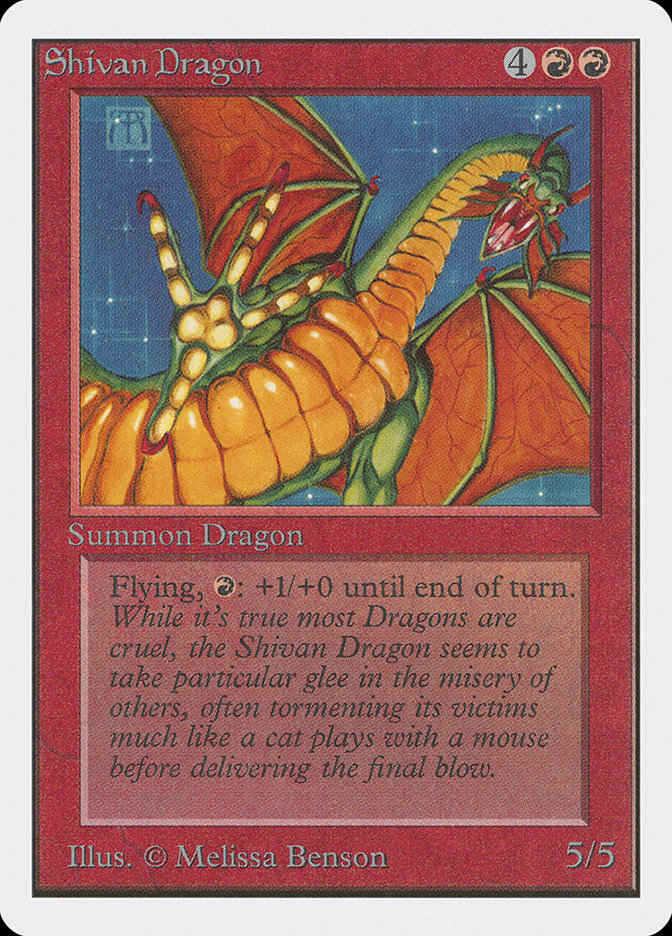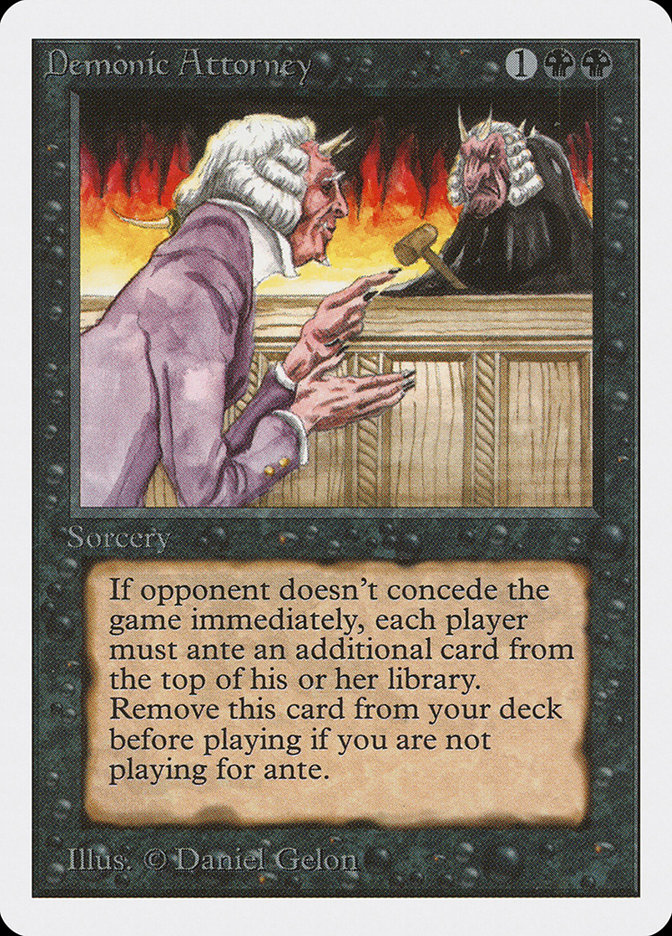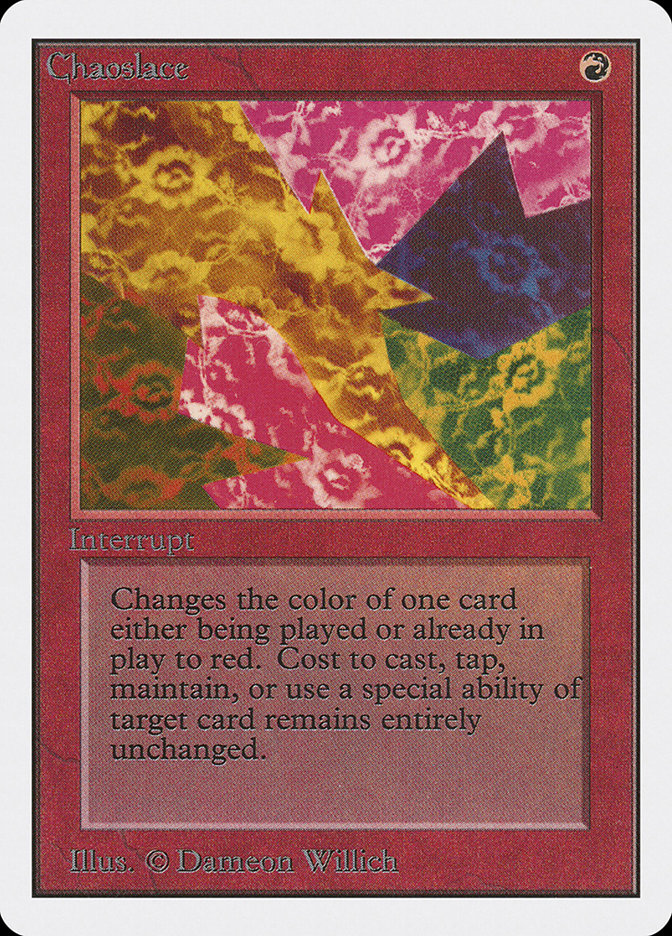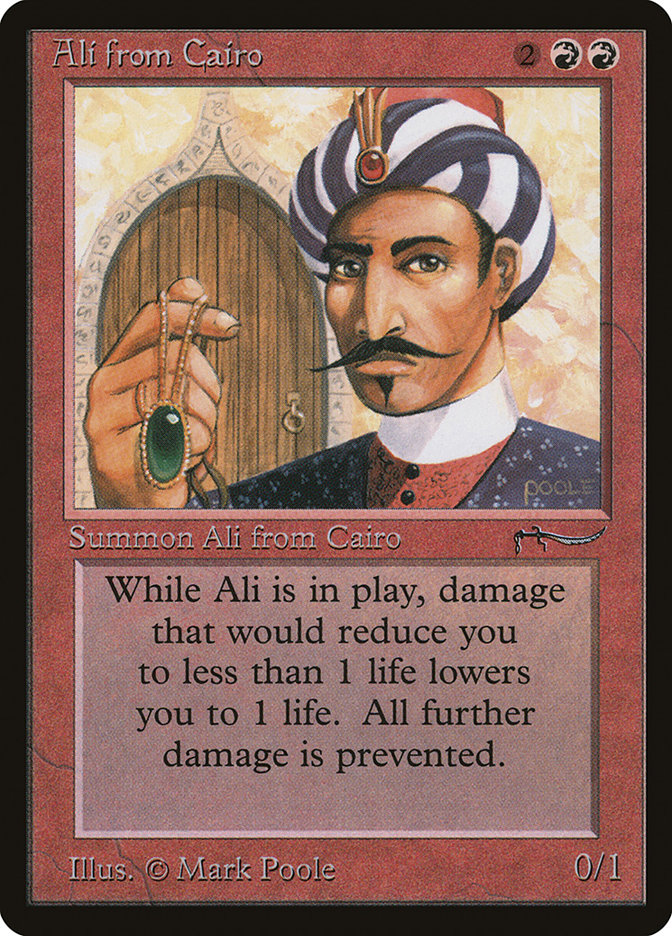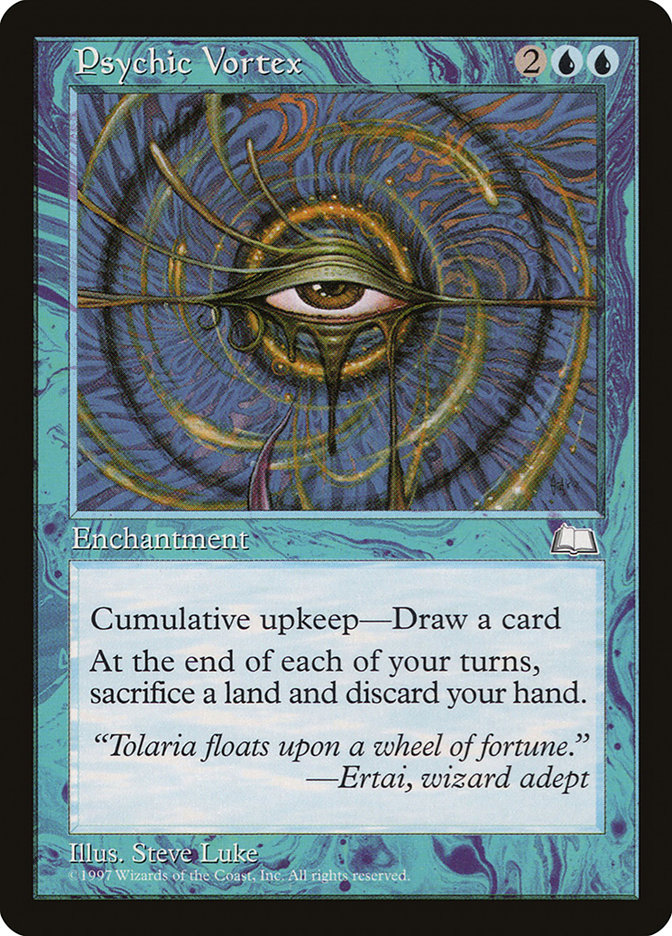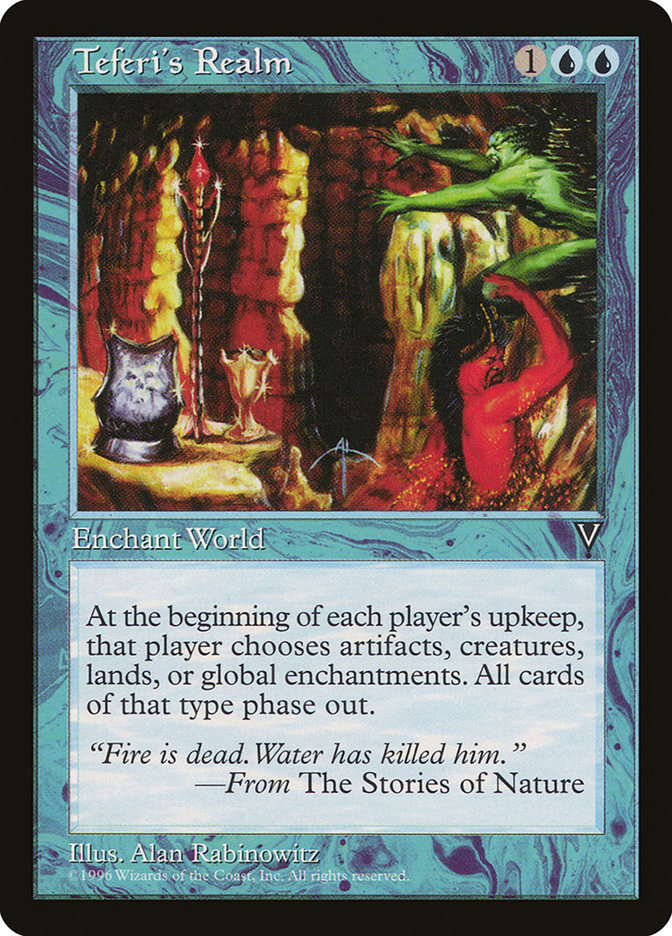It’s been a long damn time since I’ve gone to the Pro Tour.
Even though I know that what I want to do at Pro Tour Honolulu (or Pro Tour KHAAAAAAANS, if you prefer) is finish high enough to be invited back to the next Pro Tour, if I think about the experience I’ve been having in Honolulu so far, I’m going to be excited just to be battling again on the big
stage after all of these years. By the time the first of you read this, the Pro Tour will have not yet begun, but the preparation that has gone into it
will have finished. For me, all of the hard work and preparation is exactly what made the Pro Tour experience so rewarding, from that first moment I got
the spark, all the way through to today.
In a way, just doing the hard work itself and having it be meaningful has reminded me even more about what it is that has this game so hot in my veins. I want success at this Pro Tour (and the next, and the next), but I think a part of what I really want is the thrill of the hunt, the
thrill of the fight, and the camaraderie in the heat of the battle.
Magic is a game that has grown so much in the last many years, and in many ways it is practically impossible to keep track of all of the myriad
personalities that have come into this game and left their mark. Perhaps Rich Hagon knows and remembers (or at least has memorized) the accomplishments of
the entirety of the Pro Tour, but most people won’t remember someone like Truc Bui, one of the early influential drafting masters of the Pro Tour. For the
newest (or even the newer) players, I’d be unsurprised for them to not have a sense of who it is that I am and how I came to find my place in the game.
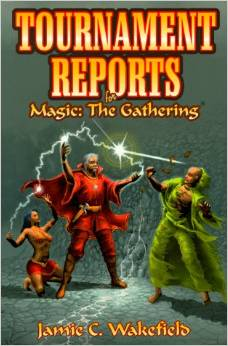
Origin stories are one of the most interesting things about good comic book movies. One of my favorite people in Magic, my friend Jamie Wakefield, is a
huge comic book fan, and also an incredibly compelling writer. In the lead up to Pro Tour London in 1999, I was sitting in an apartment in England with the
woman I loved, reading his incredible book Tournament Reports for Magic: The Gathering. The beginning of his book included Jamie’s origin story, and it meant a lot to me
to read it and see just all of those ways I could identify.
So, now, on the eve of my twentieth Pro Tour, I thought I would share my own origin story.
The Store
I started playing Magic in high school in 1993.
I grew up in La Crosse, Wisconsin, and by the time I hit high school, I was mixing a healthy dose of geek with a drive for sports. I did cross country and
track lettering both early in high school, competed in intramural tennis, took classes at the university, did traditional martial arts, and somehow found
time for both academic extracurricular activities, dating, and three D&D campaigns and a handful of Storyteller campaigns (mostly Vampire). I can’t
remember, but I probably also slept like a teenager, though I have no idea how I managed to fit all of the things I did into 24 hours.
In the fall of my junior year, someone came back from an event with a few starters of Magic. They were what would eventually be known as “Beta.” They were
all opened and incomplete, but the game was fabulously fun, and we all wanted more.
The store that I went to, Next Generation, had heard some buzz on the game, and with many of us asking about the game, they ordered starters decks for the
game. When they came in, nearly everyone in my D&D and Vampire playgroups bought one. My first rares were in that starter, and I was incredibly excited
about one of my rares:
It was just so huge. Of course, my other rares were not as great, at least to today’s eyes, but they still were very exciting to all of us.
One of the guys we played with, Brad, was a year older than me, and we decided to go in on ordering some boxes of Arabian Nights from the Charity
Fellowship. It seemed like a huge amount of money, but we figured we could make it back selling the packs. I cracked half a box and sold the other half. My
first ‘rare’ (technically a ‘U2’) was completely mindblowing to me.
We were all hooked, and for many of us, things like D&D and other games started falling by the wayside. My favorite D&D campaign soon banned Magic
cards at the table because it was such a distracting influence. I ended up spending a ton of time playing Magic, mostly at school and at the game shop, or
often at Brad’s house. We generally played for ante (it was in the rulebook!), and cards moved around at a rapid pace.
I still remember making what was probably the first “technology leap” for our playgroup: one night at Brad’s house, I stopped playing one of my five
colors. Up until that point, there was this general expectation that you just play all of your cards, or at least all of the ones you didn’t think sucked.
I did the unthinkable, not only trading away a full color of mine, red, but also the incredible card Shivan Dragon.
I’m not sure why I got rid of my red cards, but I think it was because I thought that Fireball and Disintegrate were cheesy, and I realized I could get a
really good set of cards by trading away my Shivan.
Immediately, I started winning much, much more in our one-on-one games. It was simple, really: I could cast my spells. It was actually pretty
bonkers compared to what we were used to from people who were doing well. Since we all had pretty limited card pools and we were playing for ante, my deck
quickly got even better yet, and it started to snowball except for in group games.
Then a newcomer to our Magic group, Kevin Jacobson, took things further: he went down to a single color. Suddenly, he was the one racking up
victories left and right. We all quickly followed suit, opting for single color decks of our own, or more often, two colors. Brad did a double whammy,
dropping down to forty cards (legal at the time), and reinvested more money into Magic, actually acquiring a ton of great cards.
In our own little circle, this was the Magic world. There were a couple of different groups in town, and occasionally we’d play with each other, but none
of us knew what was happening outside of the world of our shop. Next Generation was the hub for our play, and about a year later, the store held its first
real Magic tournament.
I still remember the finals of that first tournament. I had a Black Vice/Time Elemental deck that I was very proud of, and I crushed a lot of other people
with similarly bad decks, occasionally by the narrowest margins. The finals pitted me against Don Barkauskus, a guy from one of my old D&D groups. He
was a year older than me and back in town from college.
His deck was a black weenie deck with Dark Ritual, various Knights, and Hypnotic Specter. On turn 1, I laid an Island and a Black Vice. Take three! His
turn 1 was Dark Ritual, Dark Ritual, Order of the Ebon Hand, Hypnotic Specter. I untapped and Unsummoned one creature and used Word of Undoing on the
other. Take two! He dropped the Knight.
On the next turn I put down a Time Elemental and he put down a Hypnotic Specter, and after I failed to draw a fourth land, his Terror basically sealed the
deal, even if I did frantically Boomerang some of his cards before dying.
It was a real blast, but I wasn’t fully hooked in like I would be.
College
When I went off to college, I was in for a rude awakening in an important aspect of my life. I had loved competition. I had thrown myself into the
competition of cross country and track and had sought out even more by basically joining in on tons of other high school competition, including debate,
forensics, and more.
College didn’t have that same outlet for me.
Yes, there was a cross country team at school. I was attending the University of Wisconsin-Madison, and it was a huge school. Two of my former
teammates, the Agger twins, were incredible athletes and both were state champion winning runners. I had asked them how cross country was going for them at
UW, and they both responded that they were on the junior varsity team. These two athletes were two of the most talented athletes I’d ever known in that
sport to that point, they were now entering their third year, and they couldn’t make varsity.
It was extremely disappointing realizing that no matter how hard I worked, I wouldn’t be able to really feel competitive in running any more. I tried to
find something to fill that urge, but I couldn’t really find it.
Around this time, I saw a flier in my dorm for something called “MAGE”: Madison Area Guild Enthusiasts (I would learn later that they had split off from a
group called “The Guild” and used that name to draw in attendees). I saw that it was for a Magic club just off of campus downtown, and I showed up. In the
large open room of a community center were about one hundred players all engaged in different card games, mostly Magic.
I’d never seen so many people playing the game before.
It was incredibly exciting.
As the next few weeks passed, I got to meet the best guys in the room. Jim, Darrell, Kevin, Ted, Dan Bock, Drew, Don, and a few others. When the community
center closed, several of them would go to a nearby IHOP to keep playing. The night was ending, and I’d just played my first game against Jim with my Type
2 deck (Standard, essentially). He’d beaten me, and I wanted a rematch, so he invited me to join those best players for this smaller gathering after.
He beat me several times, resoundingly. It was never really close, and each time I demanded that we play again, certain I had just gotten unlucky even
though it should have been obvious I was just outmatched. I brought out my next better Type 2 deck, one that I’d done well with at a few small
tournaments, and he crushed that as well.
Angrily, I brought out my Time Elemental/Vice deck, updated with awesome new cards. He crushed me effortlessly. I brought out my Type 1 deck (Vintage, kind
of), even though his deck was still only a Type 2 deck, and while it was closer, he still crushed me, despite his handicap of card availability. (Jim would
later tell me he kept playing me because I looked so frustrated and upset, he was afraid to tell me he was done.)
After losing an incredible number of matches in a row, I realized something that was really important: just because I wanted my deck to be good, it didn’t
make it so. Also, I learned just how much larger the game was than I had realized. I had thought I was doing pretty damn well at the game, and I really
didn’t know.
This was the beginning of my time really looking to learn. It is a habit I’ve tried to continue to cultivate. I knew that the players around me were better
than I was, and so I tried to glean what I could from them. At the same time, I knew I had some good ideas, and so I continued to pursue them, all the
while trying to make sure to heed the wisdom of the more experienced players while hopefully balancing my own faith in my ideas.
The core group of guys that were most interested in tournaments, Jim, Darrell, Don, and Kevin, invited me to join them in the drive to Regionals that year
in Chicago. I was incredibly excited. This was the best group of players in town! We went to the event, and so many players had arrived, they couldn’t let
everyone in to play! I had crafted a new deck that I was incredibly excited about, but I didn’t have a chance to try it out. I was disappointed, but it was
still more than a little mindblowing to go to a huge event where so many people wanted to play that they couldn’t even find enough space for the people in
the huge hall.
Even then, in 1996, Madison had a lively Sealed deck and Draft scene. We were constantly doing Limited, and the five of us drove up to Minneapolis for my
very first PTQ, a Sealed deck tournament. I didn’t do very well, but everyone else had an incredible finish. As the Top 8 was called, all four of
my carmates names were read out, much to the chagrin of the Minneapolis crew. Jim Hustad, the guy who took me to school at that IHOP, would win the whole
thing and head down to PT Atlanta soon thereafter.
This tournament scene was fulfilling the hunger I was craving like nothing else I’d tried out could manage. And the whole concept of the Pro Tour just felt
so enormous to me. By this point, I’d started reading everything I could find online about Magic, and knowing that people from around the world were coming
together made it feel like there was a real grandeur to it all.
I became very active in online forums (rec.games.trading-cards.magic.strategy especially). It was a place full of strange characters. Mike Flores, Eric
Taylor, Gary Wise, Jamie Wakefield, Sol Malka, and many more. I had really been working on decks pretty intensely, and during the Ice Age/Alliances PTQ
season, I made a Pox deck that ended up qualifying a player in Germany for the Pro Tour.
Someone clear on the other side of the world had made it to the Pro Tour because of me.
This was too incredible.
I doubled down in my efforts to do well at Magic.
Classwork suffered.
The Upside Down Aside:
Some people ask why I orient the cards the way that I do when I play Magic. There are several reasons.
The first way I orient my cards is to place my mana above my permanents. I started doing this right at the beginning of the game because that’s how we all
learned how to play. It was actually referred to as the appropriate way to play in several different print resources from Wizards of the Coast, and so
that’s how nearly all of us did it then, and though occasionally, an oddball player would put their permanents out front, above their lands.
This isn’t really a big deal though. Most people want to know why I play with my cards facing my opponent.
It started at that community center during Weatherlight. I had a bizarre semi-combo deck that involved these two cards:
The idea of the deck was that Psychic Vortex would combo with Teferi’s Realm to give you cumulative cards every turn with no real drawback. Apparently
there was some kind of complicated wrinkle in the rules that made it not work quite like I wanted it to, but it was still a cool idea.
At the time, I was a poor college student, and it was hard to acquire cards and maintain the few decks I wanted to work on. At the community center where
we gathered every Wednesday for MAGE, the tables we played on were in incredibly rough shape. Wood splinters were common, and the tables were rough and
scratchy. No one used sleeves at that time, playmats were unheard of, and here I would have my strange deck full of strange cards.
People would pull my cards over to them, dragging them on the table, turning them around to read, and damaging my cards. This happened more to me than to
other people I knew as well, because I was the jerk playing cards like Teferi’s Realm. My cards were getting damaged from this, and it started to get
frustrating.
I started playing my cards facing my opponent.
It made a huge difference. Some people still would drag the card sometimes, but usually they wouldn’t. Strangely, sometimes people would just pick the card
up (they rarely did that when they dragged it all the way over to them) but almost never would the card actually be subjected to the harsh treatment it had
been.
It made a huge difference to me, making it easier to keep maintaining a trade stock that people might want while still playing my cards.
Eventually, I noticed that something else was happening in tournaments: it was saving me time. I was accustomed to all of the cards in my deck, but
sometimes my opponent was not, and they would have the ability to read the cards at any time in the game without any problem. Over the course of a match,
it might only be thirty seconds (or even a few minutes), but it mattered. This last Standard season, I definitely attribute my layout to how I managed to
have several matches end in victory rather than a draw.
End of the Upside Down Aside
I abandoned the Teferi’s Realm/Psychic Vortex deck, and eventually put together my first PTQ-winning deck, Tempo Blue, an Ophidian/Man-o’-War deck that I
built based on Ronny Serio’s winning list from GenCon that year. His list had gotten popularized thereafter, and while mine was an innovative take on
Ronny’s deck, Brian Kibler would win Grand Prix Toronto that same weekend, and so his list was easily the most noticed of the archetype. Still, I was
finally qualified for my first Pro Tour.
The Tour
I don’t remember much about that first Pro Tour.
I remember trying to win with Pox, basing my list on Andy Wolf’s innovative “Wolf Pack Pox” list, and while the deck had been good in the past, it wasn’t
good now. Necropotence would win the day, and Randy Buehler, also at his first Pro Tour, would win the whole thing. On the other hand, I barely managed any
wins at all.
This was the first time I really had a brush with any of the famous Magic players of the time. I still remember walking up to fellow Madisonian Bob Maher
to say hello, a box full of donuts in hand that I’d purchased for myself and my friends, and the shock of what happened next. The guy that Bob was speaking
to calmly opened up my box while he continued speaking to Bob, grabbed a donut, and ate it. It was Mike Long. Thinking about that moment still makes me
chuckle.
My first Pro Tour might have ended unspectacularly, but I’d brushed paths with one of the big names in the game!
And the experience of the tournament, even though I was crushed, was inspiring. I had so much improving to do! I could accomplish so much more.
Again, I added more effort to Magic.
Schoolwork suffered.
One fateful night, I decided to go to a PTQ at the very last minute. I had an awesome Mono-Green Control deck (this in a field full of Necropotence and
Prison decks), and I was certain it was a contender. At 10 pm the night before the PTQ, my friend “Mad Dog” Kevin (not the Kevin from above) convinced me
to just do it. The PTQ was five hours away in Minneapolis, and I didn’t have a car, but I was going to make it happen.
I called up a friend and asked to stay over on Saturday night. I rushed to the bus station and took the Greyhound to Minneapolis and then the city bus to
the event site. I didn’t have a ride home yet, but my plan was just to ask people and hope it would somehow work out. It was crazy, but I was sure it made
sense.
I managed an unexciting Top 32 finish, but I reconnected with a player I had met the week before in Chicago. He’d heard me talking about Sligh, and asked
me about the concept of mana curves (a new idea at the time); now, here he was playing for Top 8 with Sligh. He was playing it quite well. I was intimately
familiar with the stock versions of the list that were floating about in the rare places to find Magic information on the internet, and his version was
clearly his own take, and it was intriguing. We had spent some of the day talking up before this point, and we really got along well. Even though he lived
in Milwaukee, he said he could drop me off in Madison if I could find someplace to stay that night. I had my friend’s place, so I was set.
He ended up losing in the Top 4 (with both of the Top 2 qualifying) in a harrowing game 3, barely missing out on killing his U/W Control opponent. Though
he was disappointed, we still had a great time talking after the tournament. The next morning, he stopped by my friend’s house, picked me up in his full
car, and we drove back to Wisconsin. The entire car ride was just one amazing conversation about everything (but mostly about Magic).
His name was Brian Kowal.
Cabal Rogue
Brian and I ended up working together quite a lot after that. I qualified for the Pro Tour somewhat infrequently at first, but not enough for my tastes. I
decided to do something radical. I had felt like I was being outclassed in play by the very best players, and yet I felt like I had some great ideas that
seemed stronger than what I was seeing from other people.
I reached out to all of the people I could to see who were doing intriguing, smart things and also writing online about their experiences. I asked if they
wanted to join a Magic think tank, where we’d all help each other with each other’s decks, and because we were in disparate areas of the country and world,
we wouldn’t interfere with each other’s chances to win. That first crew was a few of the people in Wisconsin, and a ton of people from somewhere else.
Jamie Wakefield, Sol Malka, Mike Flores, Brian Kowal, Rob Hahn, Bill Macey, John Shuler, Eric Taylor, Andy Wolf, Elihu Feustel, Ped Bun, Shane Neville, and
Craig Sivils were all in that first crew, and other people were added on as time went on, like Jacob Janoska, Mike Donais, and more. Together we made a ton
of decks that you may have heard about. Stompy, The Rock, Junk, Counter-Oath, Secret Force, Rector-combo, Ponza, Squandered Stasis, Baron Harkonnen, Boat
Brew, Five Color Blue, Necro-Naught, as well as innovations that rocked a ton of the more standard archetypes.
All of us started qualifying more often. It was pretty cool.
Writing about Cabal Rogue itself could probably fill the pages of a book, but I can say this: I’m really proud of what we all meant to the history of
Magic. Midrange decks, for example, were largely pioneered by Cabal Rogue, with many thanks owed to Jamie Wakefield, Sol Malka, and Brian Kowal for much of
the heavy lifting. Necro-combo, an idea of Jacob Janoska’s that I worked on for Pro Tour Rome, was hugely important.
I still think about Counter-Oath as one of the crowning achievements of Cabal. This list is one I’m very proud of discovering, and it was a dominating
force in Magic for a short while. But what happened during the time after Counter-Oath that hit me so significantly was this: watching a kid in Chicago
play the deck I had found and developed and win a college scholarship with it for the Junior Super Series.
I was really proud of that kid, even though I didn’t know who he was, and even though he didn’t know that the deck in his hands was one I had found. I
already loved the process of deck discovery, but this was rewarding to a degree even greater than I had imagined would be possible.
It was just so fulfilling to see my ideas actually in the hands of a stranger, and to have it mean something to their life.
And the rest…
Magic was a roller coaster for me after that.
I did a lot of writing for the game, started doing coverage for Wizards of the Coast, and eventually left school to go to New York City and work for the
Dojo, writing and editing the biggest website in the game at the time. New York, though, is an expensive place, and I came home more than a little poorer
and worse for wear. I tried to figure out what to do next.
Dropping out of school was probably the natural conclusion for how little work I’d put into it while I’d been focusing on Magic. Now though, I didn’t have
a degree and I had very little prospects. I kept qualifying for the Pro Tour, but something had to give.
I decided to go back to school.
I decided to be serious about it.
Around this time, I fell off the Pro Tour, but life really started to come together. I got my degree, and then decided to go for a PhD. Along the way I got
a Masters, and I even managed to occasionally get to a Pro Tour, but it was really hard to manage really dedicating myself to Magic and dedicating myself
to school. I also started doing commentary for SCGLive, and I was glad to help get that program off the ground and train so many commentators. Doing this
while doing grad school was a real challenge, but I loved it.
Eventually, Masters in hand, and a little more schooling besides, I decided to drop out of my PhD program. A job soon followed; I was hired as the Director
of Communication for ACD Distribution by Bob Maher. In my job was an excellent marriage of my knowledge of the gaming world and my education, and I
couldn’t be happier.
Thankfully, it’s given me time to think about and play Magic.
Now, here I am in Honolulu, just back from a swim in the ocean, and I know this:
Here I am back at the Pro Tour, and I intend to see about staying.

